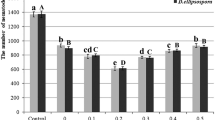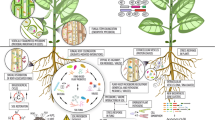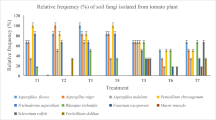Abstract
ALTHOUGH nematophagous fungi have been intensively studied in agar cultures containing nematodes, and soil organic matter has commonly been used as a source of these fungi1,2, little seems to be known of the succession of fungi in this biological group during the decomposition of organic matter in the soil. Preliminary work has accordingly been done to determine the nature of any succession with the view of further investigation.
This is a preview of subscription content, access via your institution
Access options
Subscribe to this journal
Receive 51 print issues and online access
$199.00 per year
only $3.90 per issue
Buy this article
- Purchase on SpringerLink
- Instant access to full article PDF
Prices may be subject to local taxes which are calculated during checkout
Similar content being viewed by others
References
Duddington, C. L., The Friendly Fungi (Faber and Faber, London, 1957).
Duddington, C. L., Trans. Brit. Mycol. Soc., 38, 97 (1955).
Cooke, R. C., Nature, 191, 1411 (1961).
Author information
Authors and Affiliations
Rights and permissions
About this article
Cite this article
COOKE, R. Succession of Nematophagous Fungi during the Decomposition of Organic Matter in the Soil. Nature 197, 205 (1963). https://doi.org/10.1038/197205a0
Issue date:
DOI: https://doi.org/10.1038/197205a0
This article is cited by
-
Root-knot nematodes (Meloidogyne spp.) a threat to agriculture in Mexico: biology, current control strategies, and perspectives
World Journal of Microbiology and Biotechnology (2022)
-
Zoophage Pilze
Naturwissenschaften (1987)
-
Nematophagous fungi from the maritime antarctic: factors affecting distribution
Mycopathologia (1985)
-
Ecology of nematophagous fungi: vertical distribution in a deciduous woodland
Plant and Soil (1985)
-
Predacity by nematophagous fungi and its relation to the attraction of nematodes
Microbial Ecology (1982)



